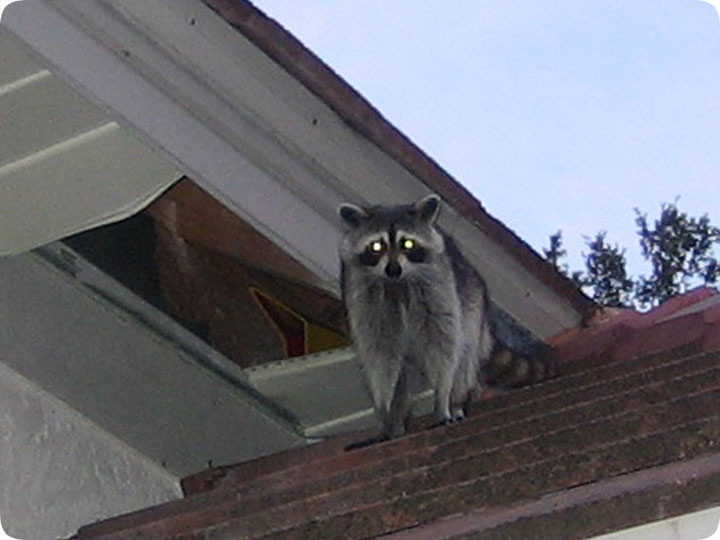-
info@aaanimalcontrol.com
Call us for help in your town
Humane Wildlife Education
Raccoon in the Soffit or Eave

If you see an area like this torn open on your roof, you can be certain that an animal, most likely a raccoon, has done it. It may or may not be up there, but there's a good chance that it is. At this job, I removed a litter of four baby raccoons from the attic, and caught the mother (seen above) this morning. After they were all out, I fixed this eave with a new piece, and I bolted it in so that it's tight. I also bolted the other soffit areas for good measure.
Home builders and construction workers build homes with concepts such as ventilation and water drainage in mind, but they don't build homes that are raccoon-proof. Raccoon-proofing is my job.
Do it yourself: Visit my How To Get Rid of Raccoons page for tips and advice.
Get professional help: Visit my Nationwide Pro Directory of wildlife removal experts.
The raccoon (Procyon lotor), is a unique animal native to North America. It's not closely related to any other animals, with distant relatives such as bears and weasels. Coons are easy to recognize, with a black mask and ringed tail. Raccoons tend to weigh between 10-20 pounds as adults. They are mostly nocturnal, and are omnivores. Racoons average a lifespan of about 5 years in the wild, and have a litter of 3-6 young each spring. They are very strong, excellent climbers, very intelligent, and they are very skilled with their hands. Raccoons have learned to thrive in urban areas, and live in very high densities in cities, where they eat garbage and pet food. They commonly break into homes and attics, where they cause considerable damage, and they also destroy other property, and thus racoons are considered pest animals by many people. Raccoon control and removal, especially from inside homes, is best left to a professional.
For more wildlife stories, click my Wildlife Blog or click my below banner to hire a local trapper.





















